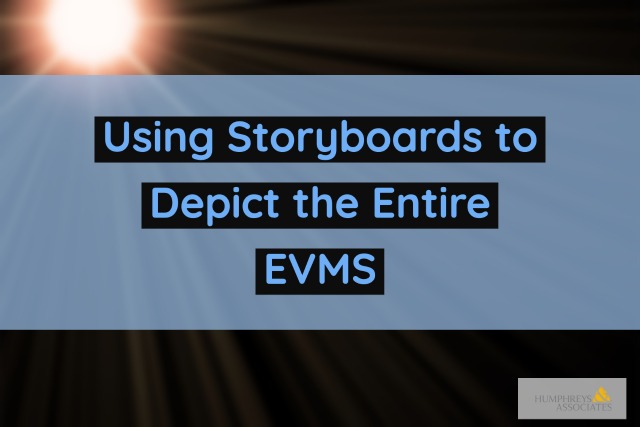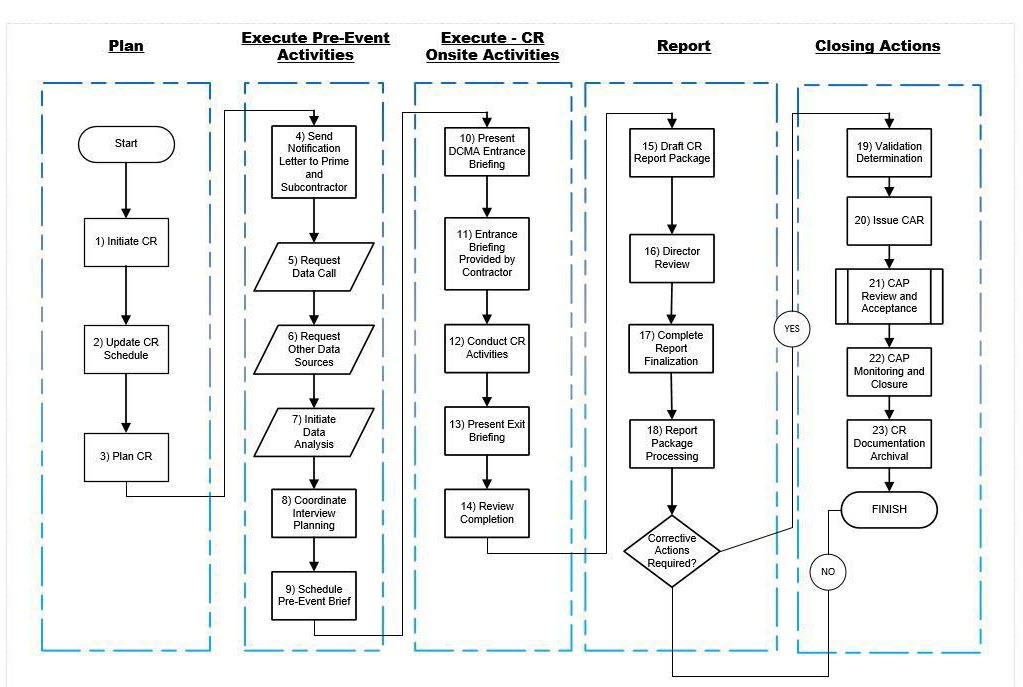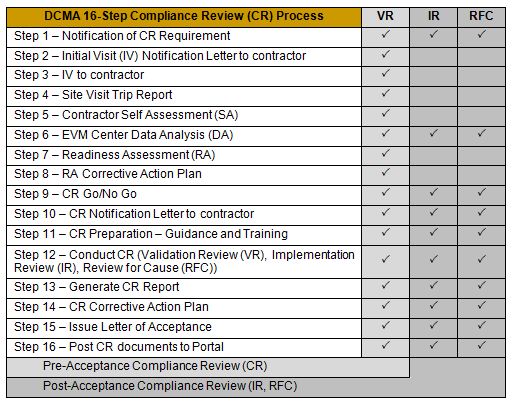EVMS Compliance Review Series #4 – Training to Prepare for Interviews

Updated November 10, 2017
Updated December 15, 2020
DCMA Compliance Review Series
This is the fourth topic in a series discussing the DCMA Compliance Review (CR) process. It is the second update to the original series #4 Blog that was based on the instruction book from the DCMA Website that identified the “DCMA 16 Step (and then their 8-Step [UPDATE #2]) EVMS Compliance Review Process.” This change was documented in the DCMA “Earned Value Management System Compliance Reviews Instruction (DCMA-INST 208).” This Instruction has been rescinded and replaced with a set of DCMA Business Practices (BP). These Business Practices split out topics the old DCMA Instruction 208 covered in one document. Whether you are a contractor new to the EVM contracting environment or a seasoned veteran, if the Earned Value Management System (EVMS) compliance and acceptance authority is the Defense Contract Management Agency (DCMA), these new Business Practices apply to you.
This is a continuing discussion about the interviews that are part of the optional contractor self-assessments and as part of conducting any Compliance Review, Surveillance Review, or Review for Cause (RFC). The DCMA uses a standard set of interview forms for the control account managers (CAMs), project managers, integrated product team (IPT) leads, risk managers, business managers, and accounting. Contractors should use similar interview questionnaires to simulate the DCMA interview process as closely as possible to prepare the CAMs and others for the DCMA interviews.
CAM Interviews are Critical
While it is important to have successful interviews with everyone, the CAM interviews are critical. The CAMs are the primary interview subjects during a compliance review. The CAMs must be able to demonstrate they have a full understanding of their scope of work and show how they use the company’s EVMS artifacts to manage their work on a day-to-day basis, in addition to the normal weekly or monthly business rhythm. The CAMs need to have a good understanding of their role to provide acceptable responses to interview questions and to be comfortable with the interview process.
CAMs must be able to demonstrate a working knowledge of:
- EVM,
- The 32 guidelines in the EIA-748 Standard for Earned Value Management Systems,
- The company’s EVMS,
- How to perform the applicable data traces for their scope of work, and
- How they fit into the grand scheme of the project.
The CAMs must also have a level of proficiency with the project control toolsets. Many companies use electronic CAM notebooks integrated into the EVMS Storyboard to assist the CAMs.
Three-Step Training for CAMs
Conducting training for the CAMs is an important preparation step. Based on our long history of successfully preparing CAMs, project managers, and others for compliance reviews, Integrated Baseline Reviews (IBRs), or surveillance reviews, we suggest a three-step training process for the CAMs.
Set Expectaions
Step 1. Conduct training sessions for the CAMs on what is expected during a DCMA interview. This training can include conducting an example group interview the CAMs and others can observe. The group interview session typically includes an open discussion at the end to critique the interview process.
- What were the good techniques?
- What could be improved?
- What are some things to avoid?
This helps to set expectations and provides a preparation guide for the people to be interviewed.
White Hat Interview
Step 2. Conduct “white hat” interview sessions with the CAMs. These are more one-on-one mentoring sessions to help the CAMs through the interview process. Providing feedback at the end of each session reinforces the learning process and increases their level of proficiency. This dry run helps the CAMs to feel more comfortable with the interview process. It also helps to increase their confidence level and ability to think on their feet.
Black Hat Interview
Step 3. Conduct “black hat” interview sessions with the CAMs. For these sessions, the interviewers conduct the interview as if they were members of the DCMA review team. If the CAM is unable to undergo a thorough interview, the session evolves into a mentoring session to help them through the process. The “black hat” interview sessions should continue until each CAM is comfortable with the interview process.
Identify Deficiencies
A summary of the findings from the interviews can help a company to be proactive in addressing known issues. The goal is to identify any deficiencies whether in the EVMS design, implementation, end-user knowledge, or data quality. Deficiencies can be reported in self-assessment Discrepancy Report (DR) forms along with the corrective action plans that will be implemented to resolve the issue.
It is far better for the company to find and address any issues as part of the internal self-assessment process than to have DCMA find them during the formal Compliance Review. This can make a difference in whether or not DCMA issues Corrective Action Requests (CARs) or recommends moving to the next step in the compliance review process.
Contact H&A to help train your Control Account Manager (CAM) with one-on-one mentoring, conducting mock review interviews, or as part of preparing for an Integrated Baseline Review (IBR). We can be reached at (714) 685-1730 or email us.
EVMS Compliance Review Series
EVMS Compliance Review Series #4 – Training to Prepare for Interviews Read Post »


 This is the second topic in a series discussing the DCMA Compliance Review (CR) process. It is the second update to the original series #2 Blog that was based on the instruction book from the DCMA Website that identified the “DCMA 16 Step (and then their 8-Step) EVMS Compliance Review Process.” This change was documented in the DCMA “Earned Value Management System Compliance Reviews Instruction (DCMA-INST 208).” This Instruction has been rescinded and replaced with a set of DCMA Business Practices. These Business Practices split out topics the old DCMA Instruction 208 covered in one document. Whether you are a contractor new to the EVM contracting environment or a seasoned veteran, if the
This is the second topic in a series discussing the DCMA Compliance Review (CR) process. It is the second update to the original series #2 Blog that was based on the instruction book from the DCMA Website that identified the “DCMA 16 Step (and then their 8-Step) EVMS Compliance Review Process.” This change was documented in the DCMA “Earned Value Management System Compliance Reviews Instruction (DCMA-INST 208).” This Instruction has been rescinded and replaced with a set of DCMA Business Practices. These Business Practices split out topics the old DCMA Instruction 208 covered in one document. Whether you are a contractor new to the EVM contracting environment or a seasoned veteran, if the 
